
Vitamins and Minerals – Deficiency Diseases
Primary and Secondary Metabolites
- In animal tissues, one notices the presence of all categories of compounds shown in Figure 9.1. These are called primary metabolites.
- However, when one analyses plant, fungal and microbial cells, one would see thousands of compounds other than these called primary metabolites, e.g. alkaloids, flavonoids, rubber, essential oils, antibiotics, colored pigments, scents, gums, spices. These are called secondary metabolites.
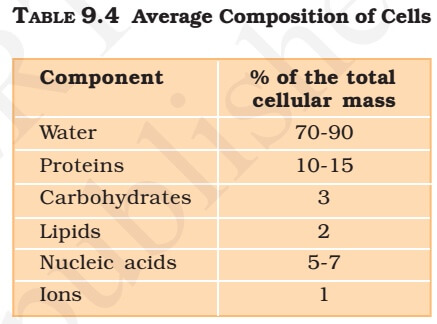
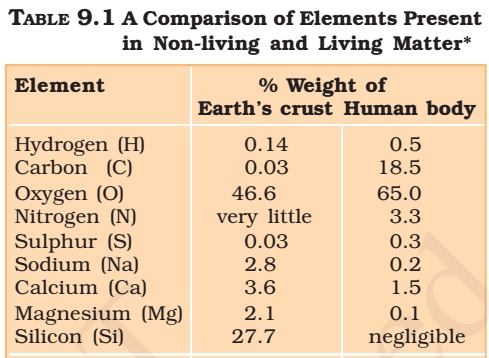
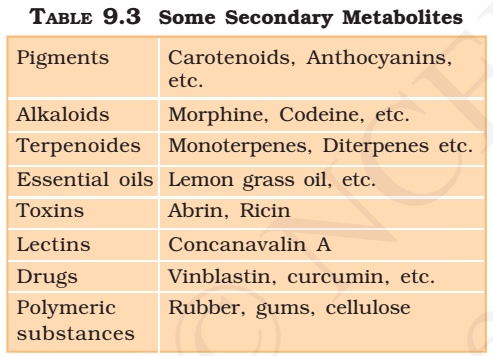
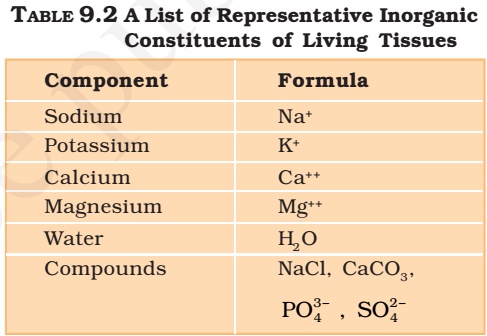
Vitamins
- Vitamins are organic compounds that are required in small amounts in our diet but their deficiency causes specific diseases.
- Most of the vitamins cannot be synthesized in our body but plants can synthesize almost all of them, so they are considered as essential food factors.
- However, the bacteria of the gut can produce some of the vitamins required by us.
- All the vitamins are generally available in our diet. Different vitamins belong to various chemical classes and it is difficult to define them on the basis of structure.
- They are generally regarded as organic compounds required in the diet in small amounts to perform specific biological functions for normal maintenance of optimum growth and health of the organism.
- Vitamins are designated by alphabets A, B, C, D, etc. Some of them are further named as sub-groups e.g. B1, B2, B6, B12, etc.
- Vitamin A keeps our skin and eyes healthy.
- Vitamin C helps body to fight against many diseases. Vitamin C gets easily destroyed by heat during cooking.
- Vitamin D helps our body to use calcium for bones and teeth.
- Excess of vitamins is also harmful and vitamin pills should not be taken without the advice of doctor.
- The term “Vitamine” was coined from the word vital + amine since the earlier identified compounds had amino groups.
- Later work showed that most of them did not contain amino groups, so the letter ‘e’ was dropped and the term vitamin is used these days.
- Vitamins are classified into two groups depending upon their solubility in water or fat.
Fat soluble vitamins
- Vitamins which are soluble in fat and oils but insoluble in water are kept in this group. These are vitamins A, D, E and K. They are stored in liver and adipose (fat storing) tissues.
Water soluble vitamins
- B group vitamins and vitamin C are soluble in water so they are grouped together.
- Water soluble vitamins must be supplied regularly in diet because they are readily excreted in urine and cannot be stored (except vitamin B12) in our body.
Deficiency Diseases
- A person may be getting enough food to eat, but sometimes the food may not contain a particular nutrient. If this continues over a long period of time, the person may suffer from its deficiency.
- Deficiency of one or more nutrients can cause diseases or disorders in our body. Diseases that occur due to lack of nutrients over a long period are called deficiency diseases.
- Vitamin A——— Night blindness
- Vitamin B1———Beriberi
- Vitamin B2——– Ariboflavinosis
- Vitamin B3 ——–Pellagra
- Vitamin B5 ——–Paresthesia
- Vitamin B6 ——–Anemia
- Vitamin B7 —— Dermatitis, enteritis
- Vitamin B9 & Vitamin B12 —– Megaloblastic anemia
- Vitamin C —— Scurvy, Swelling of Gums
- Vitamin D —— Rickets & Osteomalacia
- Vitamin E —— Less Fertility
- Vitamin K —— Non-Clotting of Blood.
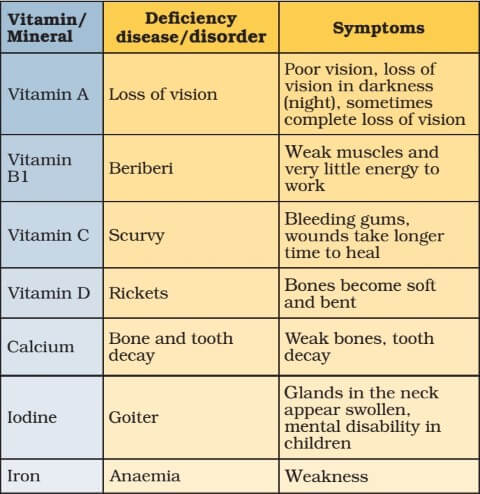
Micronutrients – Vitamins and Minerals
- Micronutrients, as opposed to macronutrients (protein, carbohydrates and fat), are comprised of vitamins and minerals which are required in small quantities to ensure normal metabolism, growth and physical well‐
Vitamins
- These are essential organic nutrients, most of which are not made in the body, or only in insufficient amounts, and are mainly obtained through food.
- When their intake is inadequate, vitamin deficiency disorders are the consequence.
- Although vitamins are only present and required in minute quantities, compared to the macronutrients, they are as vital to health and need to be considered when determining nutrition security.
- Each of the 13 vitamins known today have specific functions in the body: vitamin A, provitamin A (Beta‐carotene), vitamin B1, vitamin B2, vitamin B6, vitamin B12, biotin, vitamin C, vitamin D, vitamin E, folic acid, vitamin K, niacin and pantothenic acid.
Minerals
- These are inorganic nutrients that also play a key role in ensuring health and well‐
- They include the trace elements copper, iodine, iron, manganese, selenium and zinc together with the macro elements calcium, magnesium, potassium and sodium.
Five Important Micronutrients
- As with vitamins, minerals they are found in small quantities within the body and they are obtained from a wide variety of foods.
- No single food contains all of the vitamins and minerals we need and, therefore, a balanced and varied diet is necessary for an adequate intake.
- Of course, we already know a huge amount about how these work, and the importance they have in normal human growth and development.
- Based on this, an Expert Panel of nutritionist, NGOs and development agencies indentified five micronutrients such as those below in their priority group:
Vitamin A
- This vital micronutrient is found in a range of different foods including carrots, spinach, broccoli, milk, egg, liver and fish.
- It plays an essential role in vision (lack of Vitamin A is a common cause of blindness), reproduction and growth, and the functioning of a healthy immune system (it plays a key role in the development of white blood cells).
- Worldwide about 5 million children under the age of five are affected by xerophthalmia, a serious eye disorder caused by vitamin A deficiency.
- These children are at risk of becoming blind and are more likely to die of common childhood diseases.
Folate (folic acid)
- This is a generic term for a group of B vitamins including folic acid and naturally occurring
- Folic acid is a synthetic folate compound used in vitamin supplements and fortified food because of its increased stability.
- Folates are found in egg, dairy products, asparagus, orange juice, dark green leafy vegetables, beans and brown bread.
- They play a key role in the metabolism of amino acids and the production of proteins, the synthesis of nucleic acid (the molecules that carry genetic information in the cells), and the formation of blood cells.
Iodine
- Seaweed and fish are rich sources but in many countries the addition of iodine (known as iodization) to salt is an important source.
- Iodine is one of the most important elements required by the developing foetus due to its effect on brain development.
- Iodine also serves a number of other important functions especially in the production of hormones.
- Goitre is a visible sign of severe iodine deficiency.
Iron
- Iron has a number of key functions within the body. It acts as a carrier for oxygen from the lungs to the body’s tissues – it does so in the form of hemoglobin – and it also integral to the working of various tissues through the role that it plays in enzymatic reactions.
- Iron deficiency ultimately leads to iron deficiency anemia, the most common cause of anemia, a condition in which the blood lacks healthy red bloods cells required to carry oxygen, and which results in morbidity and death.
- Iron deficiency is the most widespread health problem in the world, impairing normal mental development in 40‐60% of infants in the developing world.
- Iron‐rich foods include lentils, red meat, poultry, fish, lentils, leaf vegetables and chick‐
Zinc
- Found in a range of foodstuffs including liver, eggs, nuts, cereals and seafood.
- The absence of zinc is associated with a number of conditions including, short stature, anemia, impaired healing of wounds, poor gonadal function, and impaired cognitive and motor function.
- It can also lead to appetite disorders, as well as contributing to the increased severity and incidence of diarrhea and pneumonia.
- The most important effect of zinc deficiency is its impact on children’s resistance to infectious diseases including the risk of infection, the recurrence of infections and the severity of infection. This is well document in the case of diarrhoea. Zinc nutrition is therefore an important determinant of mortality in children.
Food Sources of Vitamins and Minerals
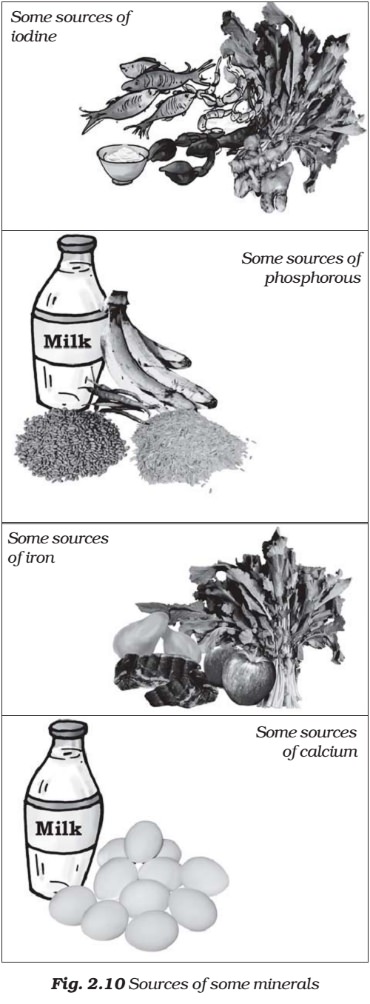
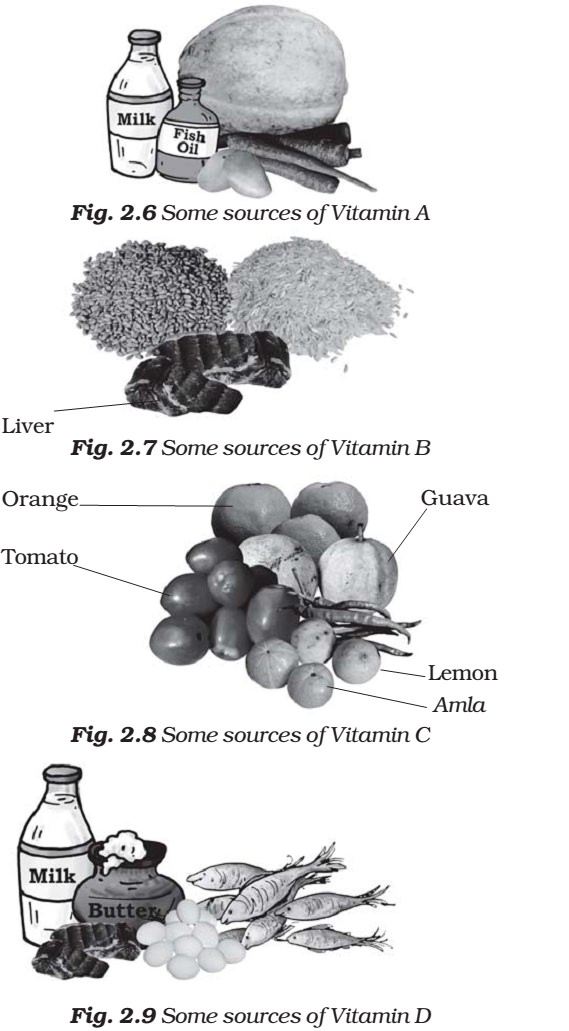
Dietry Fibers
- Dietary fibres are also known as roughage. Roughage is mainly provided by plant products in our foods.
- Whole grains and pulses, potatoes, fresh fruits and vegetables are main sources of roughage.
- Roughage does not provide any nutrient to our body, but is an essential component of our food and adds to its bulk. This helps our body get rid of undigested food.




